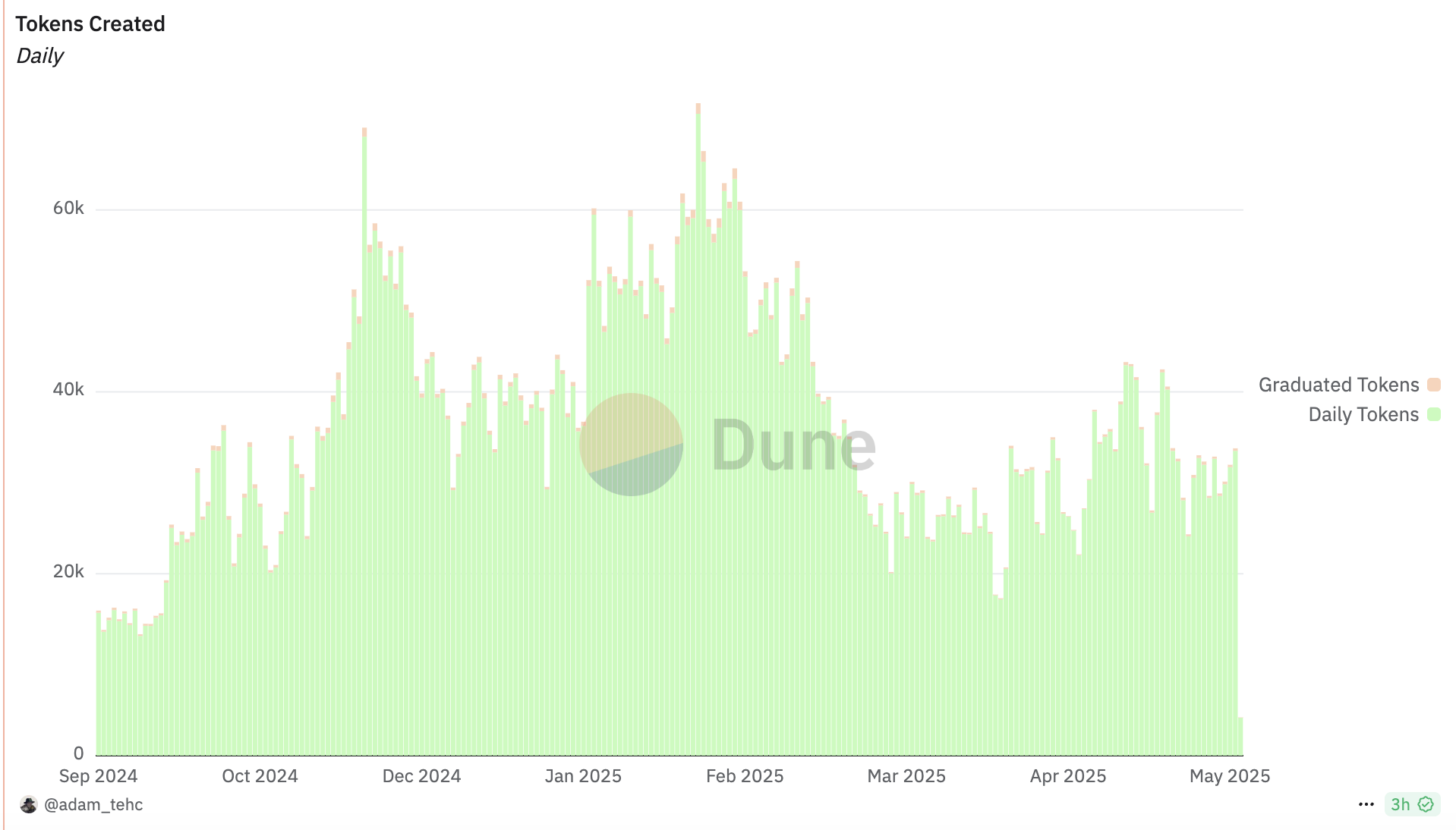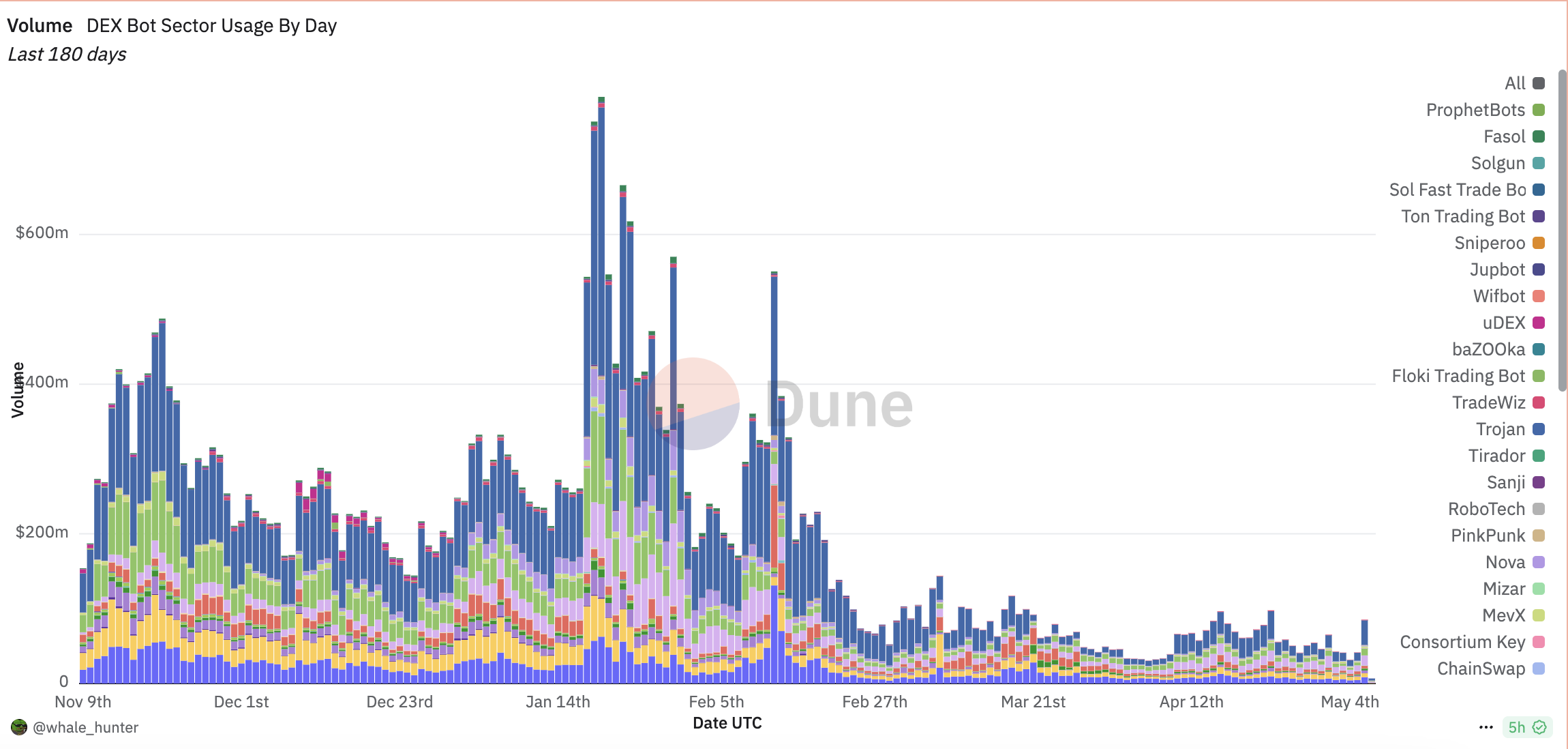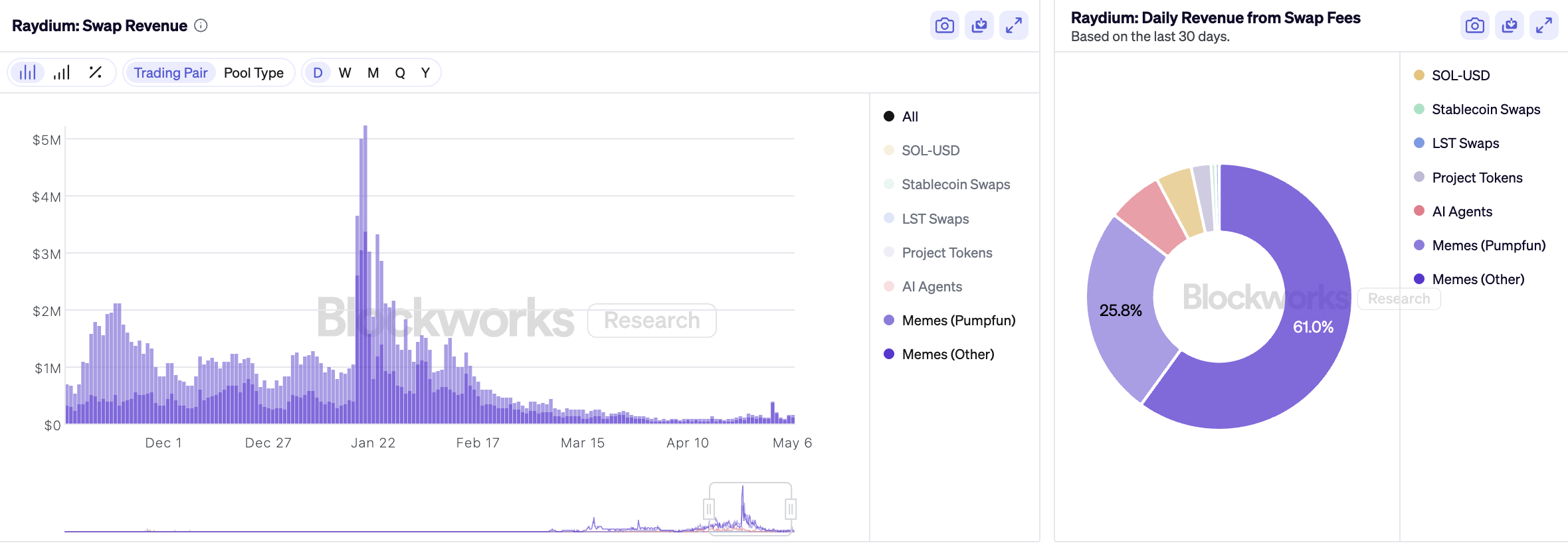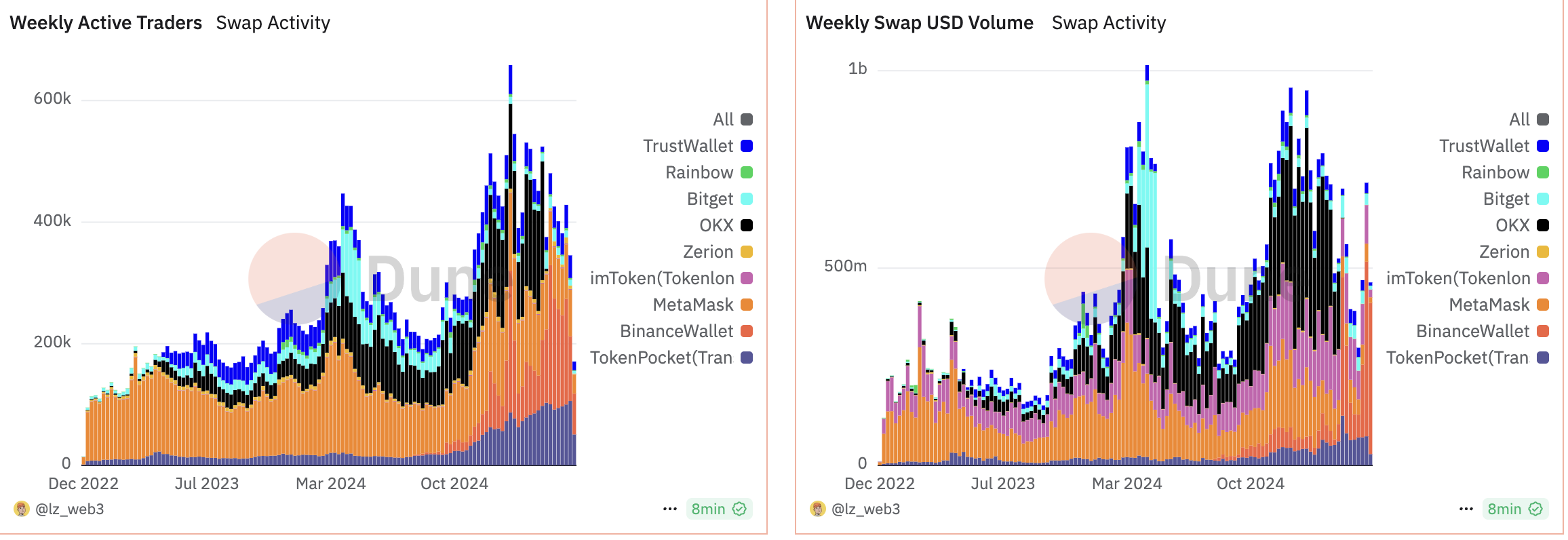Author: Nancy, PANews
Recently, the sentiment of the MEME market has gradually warmed up, especially driven by multiple Golden Dog projects, and the overall market activity has increased significantly. However, the MEME ecosystem is still in the early stages of recovery, and capital confidence has not yet fully recovered. At the same time, in the context of insufficient liquidity and high emotional sensitivity, the head effect has gradually become the core driving force of traffic and funds, especially the synergy of platforms and tools further amplifies the market influence of the head, making it a key variable in capital flows and emotional fluctuations.
Launchpad: Significant head-end effect drives emerging platforms
Although the MEME market has recovered, there is still a big gap from the historical highs in terms of the number of tokens created and user activity.

Taking Pump.fun, the current main launch site of MEME coins, as an example, according to Dune data, as of May 7, the platform has created more than 33,000 tokens per day, an increase of 48.6% from the previous low period (about 17,000), but still only 47.5% of the historical peak. In terms of token graduation rate, it has now rebounded to 0.81%, which is a significant improvement from the lowest point, but there is still a big gap from the historical high of 1.67%. In terms of user activity, Pump.fun currently has 199,000 daily active wallets, a rebound of 55.1% from the low point of last month, but only 46.9% of the historical high (about 424,000). It is worth noting that from the perspective of new users, the current daily new wallets are about 94,000, which is still limited compared to the historical peak of more than 216,000. This means that although the popularity of MEME has rebounded significantly in the short term, the overall user participation and liquidity breadth have not been fully restored.
However, some emerging token launch platforms have also expanded rapidly with the help of the head-start effect. For example, the recently popular Boop has successfully used the head-start effect to achieve user growth and market value leap in a short period of time through the FOMO effect driven by KOLs, platform incentive mechanisms and precise market rhythm control. However, this approach also faces short-term retention challenges brought by KOL airdrops, as well as competitive pressure from competitors who may copy strategies.
It is worth mentioning that many of the recently hyped "Golden Dog" projects have shown a significant head start effect, that is, high-influence figures such as KOLs and big investors drive traffic and capital inflows, forming a snowball-like spread, further amplifying the narrative value of tokens. For example, big investors collectively pushed Fartcoin's market value to break $1 billion again, and House gained momentum from well-known KOLs such as ansem and him. In contrast, the recent MEME coins that rely on event-driven or grassroots narratives, although they were able to attract short-term attention for a time, have difficulty in continuously converting traffic into effective capital inflows, resulting in a rapid decline in popularity.
Trading robots: Trading volume has recovered, but the decline from the peak is still nearly 90%
Trading robots are gradually becoming an important tool for users on the chain to improve trading efficiency, and have also rebounded recently as market sentiment has warmed up. Dune data shows that as of May 6, the daily trading volume of trading robots reached 85.37 million US dollars, and the number of daily users exceeded 57,000, up nearly 64.1% and 43.8% from the lows in recent months. However, compared with the peak in January this year, the daily trading volume and the number of daily users are still down 89.1% and 62.5% respectively.

In fact, for ordinary retail investors, the trading robots’ functions such as smart money tracking, automated copying and on-chain data analysis enable them to monitor in real time and quickly capture the dynamics of KOLs/big investors in an information asymmetric market environment, thereby effectively improving participation efficiency and reducing PVP risks.
At the same time, retail investors tend to have a high degree of trust in the trading robots recommended or used by these car heads. This endorsement effect has significantly improved the market acceptance and activity of the relevant robots. Of course, due to its capital volume and market appeal, car heads are more inclined to adopt robot tools with the characteristics of easy operation, fast execution speed, and high success rate to ensure trading efficiency and maximize profits. Therefore, whether the trading robot can meet the needs in terms of functional diversity, safety or response speed is the core factor affecting the willingness of car heads to use. Of course, the potential risk of some car heads manipulating the market through robots cannot be ruled out.
For example, Axiom, which emerged not long ago, quickly gained the favor of MEME players with its advantages such as complex strategy support, efficient transaction execution and user-friendly design, especially meeting the core needs of the head of the group (KOL/big investors), thus quickly becoming the leader in the trading robot track in a short period of time.
DEX: MEME's revenue plummeted, and PumpSwap has shown initial advantages
MEME is still one of the core sources of DEX revenue. Taking Raydium as an example, Blockworks data shows that in the past 30 days of trading revenue, daily revenue from MEME-related transactions accounted for as high as 86.8%, and daily revenue from MEME token issuance accounted for as high as 93.5%, which shows its dominant position in the overall revenue structure of the platform.

However, the revenue from MEME is experiencing a significant decline. Blockworks data shows that as of May 6, Raydium's daily transaction revenue from MEME was only $156,000, a drop of more than 97% compared to the peak of $5.244 million in January. At the same time, the daily revenue from the issuance of MEME coins also fell from a high of $149,000 to only $19,000, which also shows the rapid cooling of market enthusiasm and the obvious decline of user speculation.

In contrast, PumpSwap has shown strong momentum. Dune data shows that since its launch on March 20, the platform has accumulated a total transaction volume of US$17.67 billion, and has shown a significant upward trend since early April, with the highest daily transaction volume exceeding US$670 million. At the same time, the platform's user activity has continued to rise. The cold start phase quickly attracted a large number of new users, and then the proportion of returning users gradually increased, showing a strong user retention ability. Especially in early May, its daily active wallet number once exceeded 450,000. It is worth noting that as of May 7, PumpSwap has accounted for 12.7% of Solana DEX's total transaction volume, and has occupied an initial competitive advantage in the ecosystem.
In this process, the role of big investors/KOLs cannot be ignored. They can not only drive a significant increase in MEME trading volume, but also drive the rapid expansion of the liquidity pool and the concentrated influx of new users, becoming the core driving factor for the platform's short-term outbreak.
Wallet: Activity rebounded, down more than 80% from the peak in January
The usage of wallets is also one of the important indicators reflecting the sentiment on the chain. Dune data shows that as of May 5, the weekly transaction volume of mainstream wallets reached over 460 million US dollars, a rebound of 35.2% from the recent low, but only 51.6% of this year's peak (about 950 million US dollars). At the same time, the number of weekly active addresses of wallets reached 17,000, a sharp drop of more than 80.4% from the peak of 87,000 in January. This shows that although the transaction scale has rebounded, user participation is still sluggish, the overall on-chain activity is still in the early stages of recovery, and market sentiment has not yet fully recovered.

Similarly, the attractiveness and user stickiness of a wallet depend on core factors such as the completeness of its functions, the breadth of its usage scenarios, and its ability to integrate into the ecosystem. For example, wallets with a high market share such as OKX Web3 Wallet and Binance Wallet have successfully attracted a large number of MEME players and become the mainstream choice in this segment. In this process, the usage rate and word-of-mouth effect of large users and KOLs also played a key role in promoting the popularity of the wallet, which not only significantly increased the popularity of the wallet, but also enhanced the trust and willingness of ordinary users to use it.
















